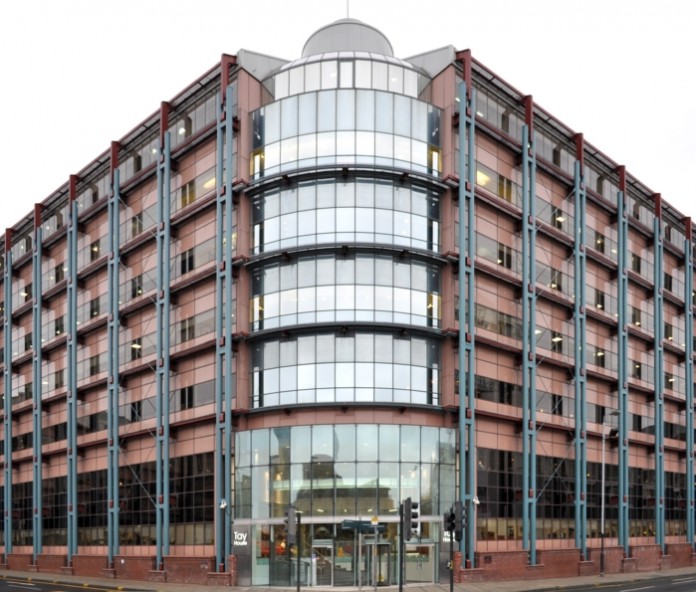Glasgow saw its best second quarter of office space take-up for almost a decade in 2016, according to analysis from independent real estate consultancy Knight Frank.
The firm’s latest figures showed that 149,527 sq. ft. of office stock was let in Glasgow during the period April – June 2016 – the highest since 2007. This also compares with 97,000 sq. ft. in the same three months last year (up 54%) and is marginally higher than the 147,000 sq. ft. let during Q2 2010.
This quarter’s activity was mainly driven by two large occupancy deals in the city involving AXA Insurance and Regus.
Last month AXA announced it would occupy 50,000 sq. ft. at Glasgow’s Cuprum building, located at Atlantic Quay – one of the largest lettings of H1 2016. Meanwhile, serviced office provider Regus agreed to take 30,000 sq. ft. at one of the city’s most well-known office buildings, Tay House, which over-arches the M8.
Knight Frank advise Tristan Capital Partners and London & Scottish on the Cuprum building and Tay House, respectively. Colin Mackenzie, Office Agency Partner at Knight Frank in Glasgow, said that the deals put further pressure on the availability of accommodation in the city centre.
Colin said: “Vacancy in Glasgow’s central business district is very much on the decline. With no new-build developments currently under construction, this trend is only likely to continue.
“The dearth in stock is particularly acute for Grade A offices, with only 1 West Regent Street and St Vincent Plaza still offering new accommodation– both buildings are attracting interest in the limited amount they have left. Occupiers will need to think very carefully about their occupational strategies for the next couple of years, particularly those seeking 20,000 sq. ft. or more in the city. There are also some great refurbishment schemes coming on line, such as 100 Queen Street and 9 George Square.
“There is still demand for space in Glasgow and the effects of Brexit are not yet fully apparent. There are no indications that it has had an effect on any live occupier requirements. With supply so low, the market dynamics in Glasgow remain largely unchanged.”


















